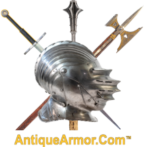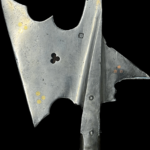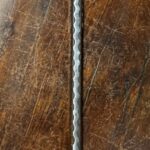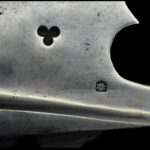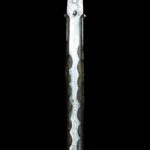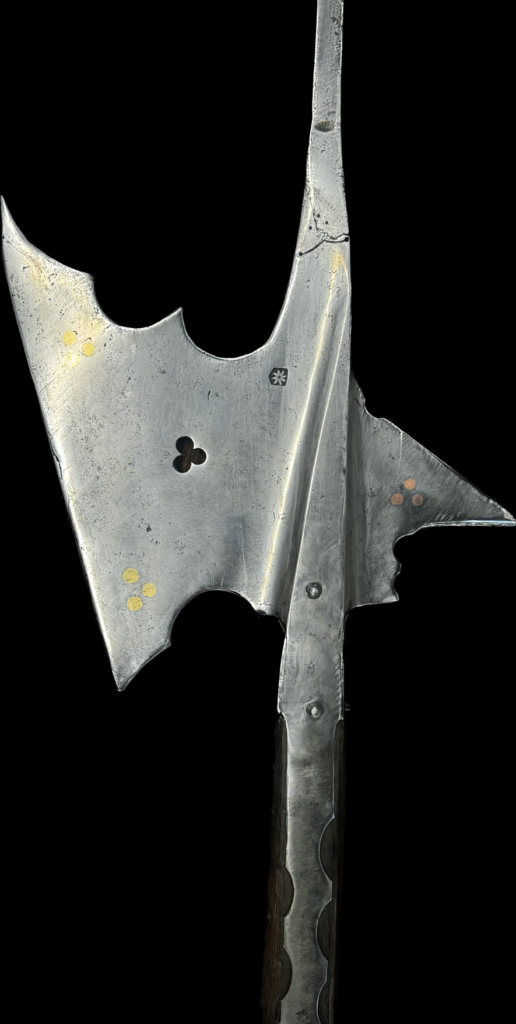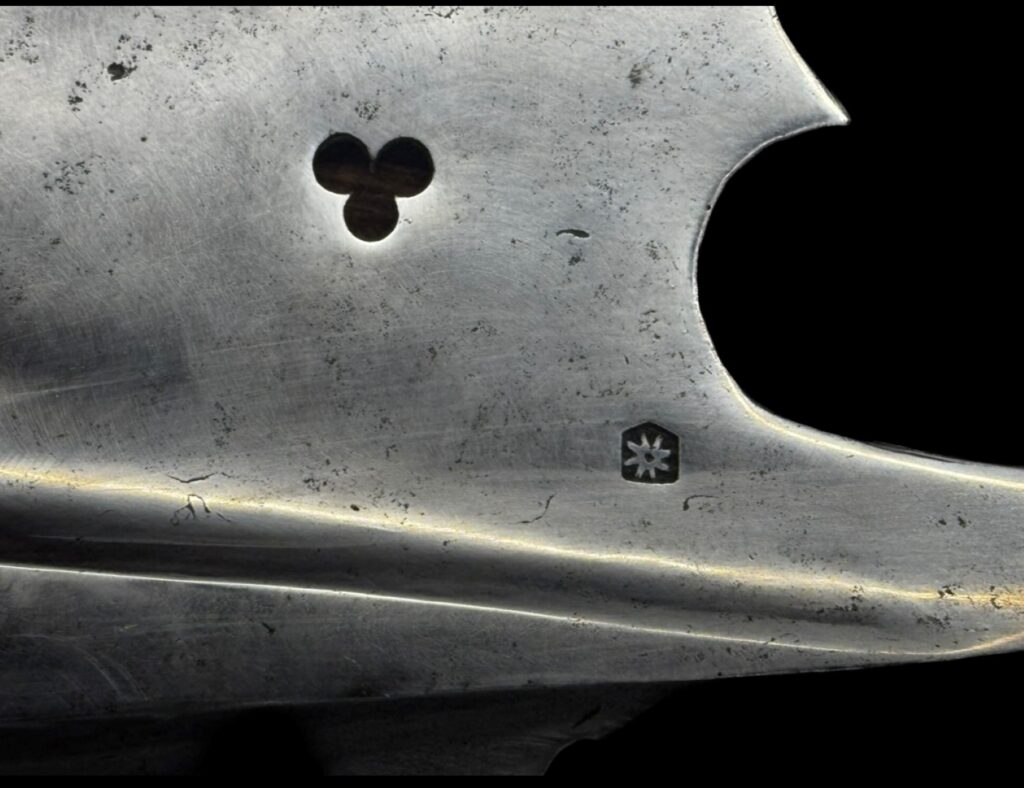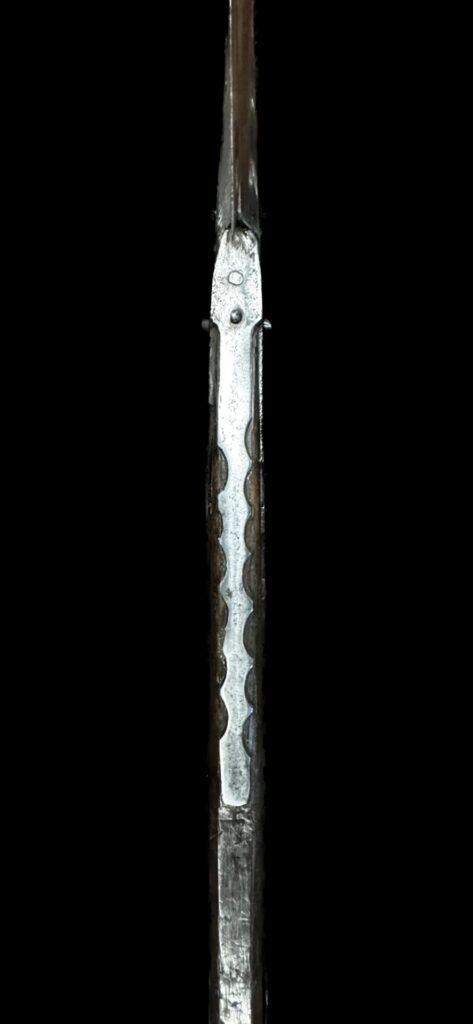1743 Halberd
1743) MINT MUSEUM CONDITION SWISS HALBERD WITH ORIGINAL HAFT CIRCA 1520: With makers mark and the original production line mark on the wooden haft. They are as hard to find as the proverbial hens teeth!
Introduction: Staff weapons with original shafts are an extreme rarity and highly sought after by collectors and museums.
Why?
Even with the advent of the gun, staff weapons were used as a third line weapons up to the 19th century in Europe. Staff weapon hafts (wood poles) were replaced one to four times during there working life as a result of use and age, which can cause the haft to dry, crack, and bend rendering them usless. taff weapons had to be ready for use at a moment’s notice (see pages 119 and 353 in my book). Replaced hafts do not have “custom features” like the original production line marks, or haft makers mark, or fit perfectly.
Discussion: By the late 15th century, the halberd had developed into a devastating weapon with three distinct functions. The head of the halberd included: (1) a spear point for thrusting and stabbing, (2) an axe head for chopping and cutting, and (3) a hook or fluke used to pull a rider from his horse or to trip an infantryman. The halberd head was socketed and connected to the pole using two to four langets of approximately 24 inches in length. German and Swiss troops used the halberd into the 17th century. After the early 17th century, they were used as third-line weapons up to the 19th century, which explains why almost all halberd shafts are not original. The halberd was seldom used in Scandinavian countries or Spain.
The halberd is a multiuse staff weapon of the Medieval and Renaissance periods. It was used with devastating effects throughout Europe. The halberd was developed in Switzerland and was popular throughout Western Europe.
The halberd was responsible for changing warfare in Renaissance/ Medieval Europe. The Medieval and Renaissance periods were very violent and turbulent. After centuries of careful development, battlefield testing, and refinement, weapons were exceptionally well-engineered for maximum efficiency. Soon, the outcome of battles would be dictated in great part by the latest innovations in battlefield weaponry and tactics. A perfect example of this was at the Battle of Morgarten in 1315. Using a newly introduced halberd, the soldiers of the newly created Swiss Confederation rousted the mail-clad superior forces of the Hapsburgs.
The halberd was first called, hallembart‚ by the German poet Konrad of Wurzberg (d. 1287), who described a blade attached to a pole utilizing two rings called ‚eyelids in a poem about the Trojan War. It originated between the 6th and 9th centuries in the early Middle Ages. The first halberds were a short sword called a ‚scramasax‚ (see page 313 in my book) attached to a wooden pole. The halberd had reached a more evolved form by the late 13th and 14th centuries. It is mentioned in poetry and contemporary records of the period. In 1348, Franciscan John of Winterthur chronicled the Battle of Morgarten in 1315, where his father fought.
Description: Constructed with a solid quadrilateral (four sided) tip, tapering to flat with an eyelid decoration with three dots above it. the base, trapezoidal (only two sides parallel) blade with an oblique (inclined) straight cutting edge, blade edges decorated with curvatures, maker’s mark of a star with eight rays within a pentagon, beak-shaped fluke with a double crest incision at the bottom, three sets of three brass inlays, a pierced cross at the center of the blade, two long and two shorter zig-zag straps, original octagonal haft bent at the bottom third section. Approximate length: 94 inches.
Provenance: Rare and exceptionally well preserved, in this condition, almost certainly from the old Basel armory inventory.
Conclusion: It is probably the best-preserved halberd I have seen in 35 years; it should be in a museum.
If your an extremely finicky collector and like staff weapons contact me now! ACT-NOW this is a rare opportunity. Staff weapons like this come on the market very…very seldom!!!*
